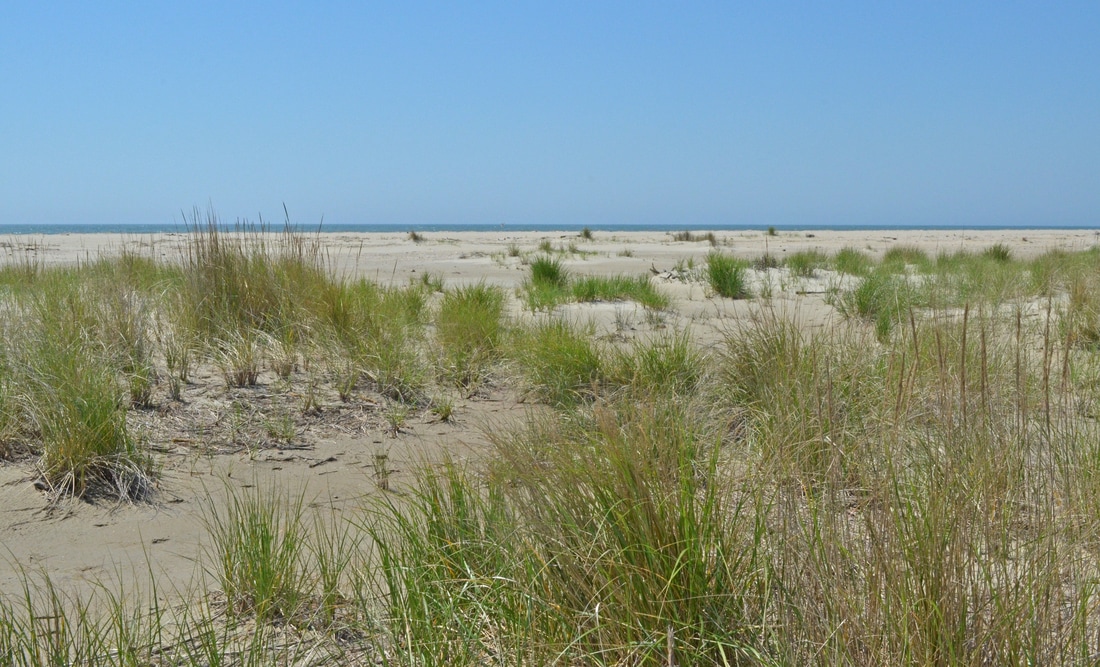It all begins with embryo dunes, the first stage of dune succession. When debris washes up on the beach, such as shells or plant pieces, it forms what is known as a wrack. The wrack protects sand from being blown around by wind, allowing it turn into the mounds that are embryo dunes. Seeds from the plant debris collected in the embryo dune begin to grow in the normally infertile environment, but the wrack permits plant growth by keeping the area cool and moist and other decaying plant matter provides nutrients for future plant life. The plants that grow on the dunes in the eastern shore are American beach grass/dune grass and panic grass. Embryo dunes then turn into secondary dunes, which are larger, have taller grass and host many generations of root systems below the surface. Due to secondary dunes being bigger, they break the wind coming from the water and catch any sand blowing around. “As sand accumulates, the plant shoots up. There’s a little bit of growth above the surface, but it is a lot deeper than we anticipate,” Tyler said, a junior high school student from Owen J. Roberts.
Grass roots beneath the sand form a long, tangled network called rhizomes which hold down the sand and keep the dune in place. “I liked how we got to experience science happening around us instead of learning it from a textbook,” Sophia said, a junior from Owen J. Roberts.
0 Comments
Leave a Reply. |
About
Everything you need to know about CBFS's educational programs, visiting Chincoteague Island, and more! Categories
All
Archives
January 2019
|
CHINCOTEAGUE BAY FIELD STATION | 34001 Mill Dam Road | Wallops Island, VA 23337 | (757) 824-5636 | [email protected]

 RSS Feed
RSS Feed

